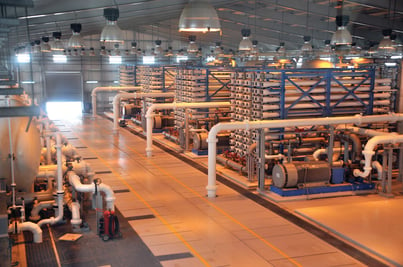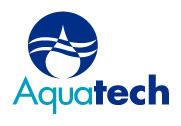Reliability and Availability in SWRO Plants
by Madanant Murugkar
Compared with plants that use thermal processes such as MSF and MED for desalination, SWRO (seawater reverse osmosis) plants may experience issues related to reliability and availability because SWRO is not as mature a process.
- Reliability relates to the equipment used in a plant. Failure of equipment, such as pumps, impacts the reliability, so it is important, when designing a plant, to select equipment that is proven and made by reputable manufacturer.
- Availability refers to the probability that the system is operating at any given point in time. In SWRO, availability has direct impact on the quantity and quality of the water being produced. Availability depends on the maintenance plan and the performance of the plant. An important consideration is the ability to restore the plant operation after scheduled maintenance. Plant design should focus on diagnostics and on ease of maintaining equipment so availability can be high. While the primary focus is on plant maintenance, performance also depends on the reliability of the equipment used in the plant, so there is a link between the two.
Each component of the system has an impact on plant reliability and availability. It is necessary to identify the most critical system components, but even those components that may be considered “insignificant” can have a significant impact if they fail. Over time, plant designers develop a set of procedures for selecting equipment. For example, with pumps, experienced designers know which ones have performed most reliably. They pay specific attention to manufacturers’ reputation and experience (and track record). They approach equipment specification by taking many precautions.
Regarding availability, in the design stage one needs to pay attention to the maintainability of equipment used in the plant.
As noted above, availability depends on the maintenance plan and the ability to restore performance. Preventative maintenance plans always need to consider ways to minimize downtime / outages. There are some strategies that can be effective in minimizing outages:
- Designing the system to minimize the parts of the system that can impact outages – for example, grouping of membrane trains into smaller sets that can be taken offline for cleaning and maintenance.
- Building redundancy into the system. Redundancy improves overall reliability, so for example, if the plant requires four membrane trains, the design may specify installation of five trains with one as a standby – in other words, building overcapacity into the plant. However, this increases the complexity of the plant and increases cost.
In SWRO, three factors impact system availability:
- The intake system that provides seawater to the plant. The water must be of consistent quality; failure of the intake system is not an option because SWRO cannot have redundancy when it comes to the feedwater – there is only one source of seawater. A properly designed and located intake system is critical in preventing sand, fish and silt from entering the treatment plant; any failure in this regard will cause the plant to shut down. Designers tend to use intake systems that have been tried, tested and proven when planning a new plant.
- Membrane life depends on the type and robustness of pretreatment. The use of membrane-based pretreatment such as ultrafiltration is effective and simplifies the necessary pretreatment process. There have been improvements in pretreatment systems and there is room for continued improvement with further advancements in membrane development.
- Improvement in RO membrane robustness and cleaning techniques. Because of fouling, membranes need to be cleaned frequently. Choosing a lower flux rate of 6-7 GFD and using alternative cleaning techniques (apart from mandated cleaning protocols specified by the membrane manufacturer) such as osmotic cleaning can increase availability from 95% – 98%.
For example, Aquatech has developed LoWatt™ low energy SWRO desalination technology to address this problem. LoWatt is an energy-efficient SWRO system designed for higher reliability and optimal energy consumption – up to 20% less than conventional SWRO. It integrates UF membrane pretreatment and a nutrient removal step while continuously deactivating bacteria without using any chemicals to mitigate biofouling. This also uses a chemical-free, online cleaning and flushing process that minimizes cleaning cycles and increases plant availability. The LoWatt system results in lower life cycle costs by solving the always-difficult issue of biofouling resulting from the presence of complex organics and bacteria in the seawater. To learn more about LoWatt, visit www.aquatech.com and download the LoWatt brochure.

